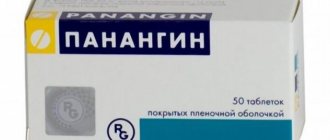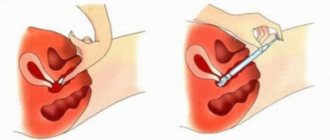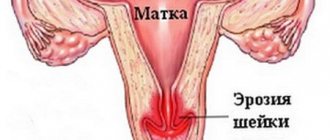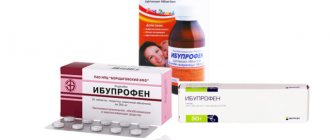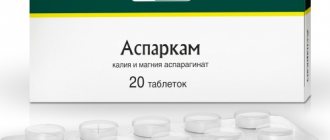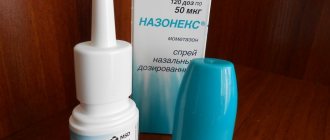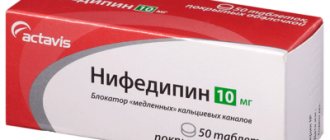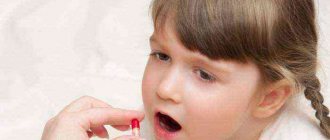Chronic cholecystitis.
This disease is recorded in the presence of inflammatory processes on the walls of the gallbladder. It can occur due to infection or stagnation of bile. In the second half of pregnancy, a woman often experiences hypomotor disturbances in the outflow of bile. This occurs due to the presence in the body of a large amount of the hormone progesterone, which relaxes all smooth muscle organs.
In order to make a diagnosis of chronic cholecystitis, an ultrasound examination should be performed. This procedure is performed in two stages: on an empty stomach and after a choleretic breakfast. Your doctor will then determine the type of dyskinesia that occurs during your pregnancy.
It should be noted that pregnancy aggravates cholecystitis. And as a result, if the disease becomes chronic, then the course of pregnancy itself becomes more difficult. This condition is accompanied by nausea, vomiting and even drooling. It should be noted that such a poor condition in particularly difficult cases can last until the 29th week of pregnancy.
In order to treat this disease during pregnancy, you must follow a diet. To do this, it is important to eat a diet that is ideally balanced in proteins, fats and carbohydrates.
If a woman has chronic cholecystitis, she must take choleretic drugs. To do this, the doctor prescribes a drug that will help contract the gallbladder. It must have choleretic properties, which will normalize the process of bile formation.
Today, preparations based on medicinal herbs are very popular. When treating with various drugs in the second half of pregnancy, fluid intake should be minimized. To do this, you should use Flamin. If you drink a lot of choleretic decoction, then the amount of urine will accordingly increase.
If tubing is necessary, you should drink the prescribed medications on an empty stomach, and then lie in bed on your right side for at least an hour and a half. In this case, the use of a heating pad is not necessary.
If you are suffering from severe pain in the right side, then you can use no-shpa, baralgin to eliminate them. However, such drugs should not be taken more than one tablet at a time.
A woman must understand that this disease requires treatment not only at the time of exacerbation. You should take preventive choleretic drugs once every three months, then the pregnancy will proceed safely.
Tarragon herb during pregnancy: why and how to use it?
photo of watercress grass in nature
Conscious termination of pregnancy by a woman is carried out not only surgically, but also after ingesting a herbal decoction. For example, watercress.
It acts on the muscles of the uterus, causing its contraction and labor. As a result, the fertilized egg is rejected and comes out of her.
Prepare watercress decoction as follows:
- wash the stem with leaves and chop with a knife or in a meat grinder
- squeeze out the juice
- mix 1 scoop of it with 2 scoops of water
- Bring to a boil in a water bath in an enamel bowl and let stand for 2-3 minutes.
- wait for the decoction to cool and take 1 tbsp 4 times a day
Before drinking zherukha, weigh the side effects:
- uterine bleeding
- inflammation of the internal cavity of the female reproductive organ
- decreased chances of a successful next pregnancy
- death of the woman herself
photo of blooming motherwort in nature
While waiting for the baby, the expectant mother’s mood and well-being changes.
Motherwort in the form of:
- decoction
- tea
- seasonings for dishes
- aromatic component at the head of the bed
Motherwort has a wide range of valuable properties for women in an interesting position, namely:
- lowers blood pressure
- calms the nervous system
- eliminates uncomfortable conditions of the digestive system - colic, excessive gas, nausea
- improves blood flow and heart muscle function
- helps maintain pregnancy
- helps reduce uterine tone
Use motherwort as follows:
- add 1 dry leaf to first courses
- drink motherwort tea in the morning on an empty stomach or throughout the day between meals
- prepare decoctions with the addition of other herbs, for example, hawthorn berries and lingonberry leaves for gestosis
- infuse the dry product with vegetable oil and take it as a sedative
photo of the cuff herb in nature
The cuff in folk medicine has the glory of a female herb. Decoctions, infusions and applying its fresh leaves to the affected areas alleviate the person’s condition.
When using the cuff internally during pregnancy you:
- save your baby when there are threats of premature birth and miscarriage
- cleanse your blood of cholesterol
- avoid uterine bleeding
- get rid of colds accompanied by cough and fever
- stop the aging process of the placenta
External use of the cuff is acceptable at any period of life and not only for women with:
- bronchial asthma
- tuberculosis
- allergic skin rashes
- presence of boils, acne
- wound healing
- disruptions of the menstrual cycle
- pain in the lower abdomen due to educational processes
Take a decoction of cuff from the end of the first trimester until childbirth, 2 glasses a day, if you are at risk of miscarriage.
Brew this herb like this:
- Pour 0.5 measuring unit of dry raw material with a glass of boiling water
- cover with a lid and leave for a quarter of an hour
- strain and drink on an empty stomach
dry choleretic herbs in glass jars
The female body independently regulates hormone levels during pregnancy. Thus, increased production of progesterone is the key to relaxed uterine muscles and the cause of stagnant processes in the bile system.
Therefore, prepare yourself herbs that will help bile circulate normally in the ducts, and help you feel comfortable. This:
- corn silk
- sandy immortelle, namely its flowers
- peppermint leaves
- dill seeds
- rosehip berries
- barberry roots
Use any of nature's gifts separately or mix them all in equal parts.
To brew choleretic herbs, proceed as follows:
- pour a measuring spoon of dry raw materials into a glass of boiling water
- strain after a quarter of an hour
- drink a third of a glass half an hour before your main meals during the day
dry herbs in glass jars for use during pregnancy
In order for the long-awaited moment of pregnancy to come, some women have to undergo treatment and strengthen the strength of their body. In addition to clinical procedures, you will find alternatives among herbal medicines.
For example, Seraphim's collection helps a woman to gently eliminate inflammation in the pelvis and increases the chances of a successful pregnancy.
In its composition you will find:
- chamomile
- wintergreen
- upland uterus
- hibiscus
- oregano
- winter lover
Seraphim's collection in the amount of 1 tablespoon, brew with a glass of boiling water, leave for up to 5 minutes and drink a third of a glass half an hour before the main meal.
If you have been diagnosed with infertility, this does not mean that children will not be in your life. There are many causes of the disease, for example, adhesions and serious inflammation in the uterus and folic tubes. They can be treated with herbs. Prepare for yourself the following healing collection from:
- leaves of coltsfoot and yarrow
- chamomile and calendula flowers
- sweet clover
Preparing for the appointment:
- Take 2 tbsp of each component and mix
- Pour half a liter of boiling water over the finished mixture in the amount of 2 measuring units and leave for a quarter of an hour.
- Take the entire infusion one day before and between meals, drinking a third of a glass at a time
- Duration of treatment 2 months
photo of senna herb in nature
In the list of herbs contraindicated during pregnancy, you will see senna. It has a strong laxative effect and is good for constipation due to various reasons.
In early pregnancy, this herb is dangerous because it increases the risk of miscarriage. From the 2nd trimester, taking its infusion will make it easier to go to the toilet if your pregnancy is normal, without pathologies or abnormalities.
Prepare yourself a decoction of senna:
- Pour 2 measuring units with a glass of boiling water
- simmer in a water bath for a third of an hour
- strain and drink in the evening a couple of hours after meals
- you can’t eat anything after drinking the decoction until the morning
Before taking senna, talk to your gynecologist.
photo of hogweed grass in nature
Borovaya uterus helps women:
- restore hormone
- improve the menstrual cycle, well-being during menopause
- strengthen the fertilized egg in the uterus in early pregnancy
- avoid uterine bleeding
- who heard the doctors’ diagnosis of infertility
We suggest you read: Is it possible to drink green tea during pregnancy? The benefits or harm of a popular drink
Take it before conception to improve your chances of a healthy pregnancy. For this:
- pour a couple of measuring spoons of dry raw materials with half a liter of boiling water
- simmer in a water bath for a quarter of an hour
- let sit for an hour
- drink the decoction in three servings during the day after main meals
Opponents of using boron uterus during pregnancy argue that it has a strong effect on a woman’s hormonal levels. On the other hand, there are no really confirmed studies of the harm of this herb on the female body during pregnancy.
mint and lemon balm leaves in a teapot
The aromatic herbs mint and lemon balm always attract women with their ease of brewing and beneficial properties. During pregnancy they are effective for:
- harmonization of mood and sleep
- improves the functioning of the digestive system and heart
- eliminating neuroses and unreasonable fears
Melissa eliminates swelling and copes with colds, and mint helps the flow of bile and return to consciousness in case of severe dizziness.
Tea made from these herbs is an assistant for toxicosis. Thanks to him, a healthy appetite will return to you.
Drink lemon balm and mint tea at night for physical and emotional relaxation. If you are bothered by low stomach acidity, add a slice of lemon.
Brew aromatic tea like this:
- Pour boiling water over 3-5 leaves of mint and lemon balm
- leave for 5 minutes in the cup to infuse
- add lemon if desired
- drink in small sips, you can taste it with honey
Remember that you should not drink this tea for more than 3 months while expecting your baby. Mint has a relaxing effect on muscles and reduces pressure in the veins. It can provoke premature birth.
photo of lungwort in nature
Lungwort has been used for a long time to get rid of respiratory diseases, including bronchitis, pneumonia, and chronic cough.
Its additional properties that are valuable for a pregnant woman:
- normalizes the functioning of the urinary system, including cystitis
- promotes hematopoiesis
- has a beneficial effect on the thyroid gland
- stops bleeding, including uterine and gastric
- regulates the functioning of the nervous system
- heals wounds, ulcers
For medicinal purposes, prepare an infusion of lungwort for yourself:
- Pour 2 measuring units of dry herb with a glass of boiling water
- keep in a water bath for 10-15 minutes
- leave for an hour
- take 4-7 spoons three times a day half an hour before meals
The duration of treatment depends on the disease, but the minimum is 10 days.
Caution - before starting to take lungwort, consult the doctor who is observing you.
photo of tarragon grass in nature
Tarragon, or tarragon, has a beneficial effect on the human body, namely:
- prevents the formation of blockages in the blood vessels of the heart and brain
- eliminates adhesions and erosions in women, nausea, pain, including PMS
- normalizes appetite, sleep, digestive system function
- improves bile flow
- Provides antibacterial protection to teeth while rinsing, relieves pain
The vast majority of sources will warn you not to take Tarragon during pregnancy. Causes:
- it reduces the process of milk production by the female body
- provokes abortion
Cholelithiasis.
Cholelithiasis, calculous cholecystitis, is a disease that occurs with the formation of stones in the kidneys or gall bladder. Doctors say that during pregnancy, when great changes occur in a woman’s body, this disease can worsen significantly.
To treat this disease, you should use choleretic drugs, as well as adhere to proper nutrition. If severe pain occurs, then drugs with an antispasmodic effect should be used, such as analgin, no-spa, papaverine, hydrochloride, baralgin.
Relatively recently, drugs appeared on the pharmacological market that have the properties of dissolving stones. They contain cheno- and ursodeoxycholic acids. It is worth noting that a pregnant woman should not use such drugs, as they can negatively affect the fetus. It is also strictly forbidden to take stone crushing agents, such as shock wave lithotripsy.
During pregnancy, only as a last resort, namely when the common bile duct is blocked by a stone, surgery is performed. This may be removal of the gallbladder or laparoscopic intervention.
This option is often used because it is not necessary to completely open the abdominal cavity. All necessary manipulations are performed using surgical instruments through the navel and small side incisions under the ribs. After this, not even a scar remains, and the recovery period lasts only three days.
Pregnancy in the presence of diseases of this type does not require termination. It is worth noting that during exacerbations that last quite a long time and are accompanied by severe colic in the abdominal area, surgical intervention should be performed immediately, since cholecystitis can manifest itself in the form of jaundice.
Symptoms and signs of cholestasis in pregnant women
Symptoms characteristic of hepatic cholestasis during pregnancy can be identified, which manifest themselves as follows:
- excessive release of bile into tissues and blood;
- There is a reduced level of bile in the intestinal area, and may be completely absent.
During cholestasis, pregnant women experience itching of the skin
Among the signs, treatment of the biliary tract is necessary if there is itching of the skin, the process of digestion and absorption is disrupted.
When dyskinesia worsens during pregnancy, dry skin is observed and the woman’s sleep is disturbed. As a result, stress and deterioration in well-being are observed.
The third trimester of development of cholestasis is distinguished for pregnant women, starting from the 28th week. Due to external manifestations, the disease is sometimes confused with an allergy.
It is difficult to diagnose the disease in the first month of life. After 2-3 weeks, the first signs are observed. The patient is referred for tests and additional examinations for quality diagnosis.
The consequences of such a disease can be the formation of gallstones, the occurrence of cirrhosis, and insufficiency.
Pain appears during exacerbations of the disease.
In the event that cholestasis is diagnosed during pregnancy, the symptoms of which are as follows:
- weakness of the body;
- weight loss is observed;
- feces and urine change their structure and color.
Cholestasis in later stages manifests itself in the form of intrauterine fetal death and death at birth. Premature birth is often identified as a complication.
Vitamin deficiency may cause stagnation of bile during pregnancy. During this period, the body experiences a vitamin deficiency. Osteoporosis manifests itself, as a result of which the patient’s bones become fragile and become brittle in their structure.
Choleretic drugs during pregnancy.
First of all, it should be noted that choleretic drugs during pregnancy can be taken only those that do not cause the uterus to contract and cannot penetrate the child’s body through the placenta. These remedies can only worsen a woman’s condition.
Choleretic drugs that can be taken without the risk of harming the health of the child or mother:
cholenzyme;
- holosas;
- holemax;
- single;
- valerian;
- magnesium (magnesium sulfate);
- cormagnesin;
- atropine;
- metacin;
- papaverine (papazole);
- drotaverine (no-shpa, bioshpa, nora-drotaverine, nosh-spa, ple-spa, spasmol, spasmonet, spazoverine, spakovin).
- Odeston;
- holonerton;
- holestil;
- flamin;
- febihol;
- berberis-hommacord;
- Chophytol;
- aminophylline.
There are also drugs that can be used during pregnancy under the strict supervision of a doctor or on his recommendation. These drugs are safe for use in theory, but additional clinical trials have not been carried out for ethical reasons. That is why the instructions for such products indicate that their use should be carried out under the constant supervision of a doctor.
Choleretic drugs that can be taken under the supervision of a doctor:
Today it is quite popular to use herbs with a choleretic effect, since they contain a large amount of useful substances. However, the overall effect of their use is quite difficult to assess. You can choose from ready-made forms of medicines that consist entirely of herbs. These include: Holosas, Holemaks, Cholenzym and so on.
The dosage and duration remain the same as for a non-pregnant woman.
Bear ears grass: use during pregnancy
photo of mid-ear grass in nature
Bearberry herb has diuretic, antiseptic, and decongestant properties. It can also help relieve symptoms of cystitis.
On the other hand, bear ears increase nausea during pregnancy and the urge to vomit. Due to the high concentration of tannins, bearberry irritates the muscles of the uterus, they contract more actively. This is fraught with miscarriage and premature birth.
Consult your gynecologist. Most likely, your doctor will suggest an alternative to bear ears, such as an orthosiphon. The latter has the same medicinal properties as bearberry, but does not increase nausea and the frequency of muscle contractions of the uterus.
If you can’t do without bearberry, drink its infusion for no longer than 10 days, three-quarters of a glass a day.
Choleretic herbs during pregnancy.
The use of traditional medicine may be necessary if a pregnant woman has hypomotor dyskinesia. This disease manifests itself in the form of improper activity of the gallbladder due to excess progesterone in the body. This hormone is necessary to relax smooth muscles throughout the body. And the gallbladder is no exception. As a result, bile is not completely removed from this organ. Therefore, over time, stagnation forms in the gallbladder, which leads to dysfunction of the digestive system.
The first symptom of dyskinesia is severe pain in the hypochondrium. She's dull and whiny. There is also a constant feeling of heaviness. Along with this, severe bitterness in the mouth, heartburn, flatulence, and belching of air may occur.
In order to treat this disease, you should adhere to a specially designed diet. To do this, you should eat only those foods that promote the outflow of bile. It is recommended to include Essentuki mineral water No. 4, No. 17 in your diet.
The best outflow of bile from the body of a pregnant woman occurs when using special decoctions. To prepare them, you should use corn silk, peppermint, dill and its seeds, rose hips, and barberry root. Please note that this composition can only be consumed in the amount of no more than a third of a glass. This should be done before every meal. It is recommended to use medicinal herbs in the second part of pregnancy, since the choleretic effect obtained from them does not affect the functioning of the urinary system.
During the process of bearing a child, women often experience disorders in the liver, as a result of which doctors prescribe choleretic drugs. Serious disorders can appear due to a shift in the abdominal organs that occurs as the uterus enlarges. Physiological changes accompanying pregnancy provoke stagnation of bile and the occurrence of biliary colic. Such phenomena bring discomfort to expectant mothers and can cause the development of serious pathologies.
What is cholestasis
It is important to know what cholestasis is in order to minimize the likelihood of getting sick and to diagnose the disease in time.
A condition in which stagnation of bile occurs in the inner part of the gallbladder and bile ducts is cholestasis. The disease occurs in two main forms: acute and chronic.
Yellow-colored bile is formed during liver function, then accumulates in the area of the hepatic lobules. Then it enters the intrahepatic and extrahepatic bile ducts into the gallbladder. It consists of bile acids, cholesterol, phospholipids, and bilirubin. The body of a pregnant woman at this time suffers from a pathological process in the liver area. During chronic manifestations of pregnancy, duodenal ulcers or pancreatitis are also diagnosed. Such ailments affect the normal process of bile outflow.
According to statistical studies, biliary dyskinesia during pregnancy is a rare disease. The risk of the disease is about 1% of the female population. They are well acquainted with its symptoms and manifestations. The incidence rate is high in the countries of South America and Scandinavian countries, for example, Sweden, Denmark, and Iceland. In these countries, the indicator is about 15%.
The disease cholecystitis appears in the gallbladder during pregnancy from frequent exposure to stressful situations, overeating or physical inactivity.
All expectant mothers should pay attention to changes in their health. In particular, this applies to uncharacteristic symptoms. This is itching at night on the palms and soles. Over time, the discomfort spreads to other parts of the skin. The color of a woman's urine changes and becomes darker. Cholestasis during pregnancy manifests itself in the form of yellowing of the skin, eyes, and frequent, light-colored stools.
To diagnose cholestasis during pregnancy, you need to seek help from a doctor. After 15-20 days of observing itching, you can take the necessary tests.
Pregnancy and gallbladder function
The main function of the gallbladder is to store bile, which facilitates the processing of fats and the absorption of nutrients. After the consumed food moves into the duodenum, the bile secretion is directed into it in small volumes through the ducts. When the stomach is empty, the sphincters of the ducts are locked, and bile is released from the bladder only at the next meal.
In pregnant women, due to an increase in the production of the hormone progesterone, the outflow of bile slows down significantly already in the early stages. The walls of the bladder become relaxed, and liver secretions are not pushed into the duodenum. As a result, bile stagnation occurs (cholestasis), leading to inflammation of the bladder walls (cholecystitis).
Late term is characterized by an increase in fetal weight, which provokes compression of the liver and gall bladder.
This provokes the progression of congestion, decreased activity of the bile ducts, and exacerbation of existing chronic diseases. Often during pregnancy, stones form in the bladder due to impaired bile secretion. Therefore, special attention should be paid to emerging symptoms - colic, a feeling of stretching in the right side, pain on the right under the ribs. All these signs usually appear after consuming fatty foods, intense fetal movement, and in some cases due to worries and worries. If a pregnant woman has previously had gallbladder pathologies, it is necessary to tell the doctor about this so that he can prevent the development of complications in time.
In the first trimester of pregnancy, some manifestations of liver pathologies (nausea, vomiting, heartburn) can be confused with toxicosis. But if these symptoms do not stop in the middle period, it is necessary to do an ultrasound.
Choleretic agents
Recommended drugs are divided into the following groups:
- Choleretics. Designed to stimulate bile formation. Medicines in this group are represented by true and synthetic choleretics. The first type includes products made from plant extracts or animal bile. Synthetic choleretics enhance the production of bile due to chemicals obtained through the process of organic synthesis.
- Cholekinetics. The drugs improve bile secretion. They irritate the muscular walls of the gallbladder, thereby increasing their contractility. At the same time, cholekinetics relax the extrahepatic ducts, allowing bile to freely exit into the duodenum.
- Cholespasmolytics. Relieves spasms in the bladder and promotes the removal of bile.
- Drugs that reduce lithogenicity indices. They contain bile acids and are intended to prevent the formation of stones.
All medications have similar effects, but only a specialist can recommend them after a thorough examination.
Choleretic for cholestasis
Disruption of the processes of formation and secretion of bile is called cholestasis, or stagnation. The pathology is manifested by unpleasant sensations in the right hypochondrium, significant itching of the whole body (especially the palms and feet), fatigue and even jaundice of the skin. Cholestasis is often confused with manifestations of allergies due to the similarity of symptoms. The difficulty of diagnosing the disease leads to the fact that it is detected only after special tests (biochemistry) to detect the level of bilirubin and transaminase. An ultrasound examination of the liver is also indicated.
If the presence of the disease is confirmed, the doctor prescribes choleretics, drugs that increase the production of bile secretions, or cholekinetics that stimulate the outflow of bile.
You should definitely check for gallstones before taking this group of medications. When bile production is stimulated, they can move and block the ducts.
Among the natural-based drugs recommended:
- Holosas, Holos, Holemaks (extract from rose hips).
- Peridol, Insadol (extract from corn silk).
- Hofitol, Holebil (artichoke extract).
- Flamin (extract from immortelle flowers).
- Tanacehol (tansy extract).
These medicines are based on plant extracts, so pregnant women can take them calmly, remembering to consult a doctor.
Contraindications and side effects
In some cases, it is necessary to refrain from taking choleretic drugs. The main contraindications for their use are:
- exacerbation of gastric and duodenal ulcers,
- the presence of individual intolerance to drug components,
- exacerbation of pancreatitis.
In any case, you should consult your doctor before starting treatment. Contraindications may vary depending on the type of drug.
Choleretic for dyskinesia
A weakening of the process of moving bile through the ducts is called dyskinesia. In this case, the walls of the bladder do not contract in the required rhythm, which causes a delay in the release of secretions. The bile stagnates, inflammation occurs, and possibly even the formation of stones. The development of the fetus in pregnant women, which compresses all internal organs, often causes similar processes. This is also facilitated by increased hormonal levels, which affect the motor activity of internal organs. There are several types of dyskinesia, but in any case the pathology is characterized by insufficient emptying of the bladder.
To normalize its activity, complex treatment is used, including a balanced diet, physical activity and the prescription of choleretic drugs.
To relieve sphincter spasms or reduce bladder tone, you can use antispasmodics:
To enhance the outflow of bile, choleretics are prescribed:
It is also recommended to take light sedative tablets or tinctures (motherwort, valerian). All medications can be used only after consultation with a specialist and diagnosis. Self-use is prohibited.
Choleretic for cholecystitis
In the last trimester of pregnancy, against the background of late gestosis, a woman may develop cholecystitis. Usually it occurs if the pregnant woman had prerequisites for this or previously suffered from this pathology. With the intensification of all processes in the body, increased inflammation of the gallbladder may also appear. In the third trimester, the uterus rises high and compression of the internal organs occurs. The liver secretion ceases to be normally pushed out of the ducts, stagnates and provokes the formation of stones.
Many women pay almost no attention to the symptoms of cholecystitis - pain, nausea, belching - associating the painful manifestations with pregnancy. And only when an exacerbation begins, women consult a doctor. If toxicosis continues until the 30th week, this directly indicates liver problems. The seriousness of the situation is confirmed by symptoms such as yellowing of the skin and discoloration of stool. Cholecystitis is very easily diagnosed through a doctor’s examination, palpation, and ultrasound.
Exacerbation of cholecystitis is fraught with the spread of inflammatory processes throughout the entire abdominal cavity.
If toxicosis continues until the 30th week, then you should definitely seek the help of a specialist, since the operation is contraindicated for pregnant women.
After the tests, the doctor will recommend a suitable diet and choleretic agent:
- Kholosas (alcohol-free rosehip syrup);
- Chophytol (tincture of field artichoke water);
- Tanacechol (tansy extract);
Severe attacks of pain can be relieved by using antispasmodics:
- Drotaverine;
- Convaflavin (lily of the valley extract);
- Baralgin.
Choleretic tea, which contains herbal ingredients, is used as an affordable natural remedy.
But even with herbal medicines you need to be careful: they can cause allergic reactions or nausea. Surgery for cholecystitis is resorted to only in very threatening cases: when the diagnosis of purulent inflammation is confirmed or when stones are stuck in the bile ducts.
Natural choleretic agents
Helichrysum is used as an effective natural remedy that stimulates bile secretion and increases bilirubin and cholate levels. The active substances of the plant - flavonoids - have an antispasmodic effect on the walls of the gallbladder and extrahepatic ducts. Peppermint herb reduces inflammation, reduces muscle tone, and has a calming effect. Yarrow enhances the antispasmodic effect, while simultaneously relieving inflammation and increasing gastric secretion.
Never change the dosage of medicinal preparations and decoctions recommended by your doctor. Many herbs have toxic properties in large quantities, so they must be taken exactly as prescribed.
A good remedy that promotes the outflow of bile is corn silk extract. The oils contained in the herbal preparation enhance the motility of the gallbladder, dilute the bile, and relax the ducts.
Expectant mothers can brew teas from herbs that promote bile secretion. All herbal preparations are prepared at the rate of 1 tbsp. spoon per glass of boiling water.
The following herbs can be recommended:
- Garden dill. Raw materials are prepared from ripened fruits. Take half a glass up to 4 times a day.
- Creeping wheatgrass. In the fall, the roots are harvested, thoroughly washed and dried. The decoction is taken 4 times a day, half a glass.
- Rosehip (fruit). The dried raw materials are brewed and allowed to brew. Take half a glass three times a day.
- Immortelle (tsmin sandy). The collected herbs are dried and brewed according to the recipe. Take before meals three times a day.
How to take choleretic substances?
Almost all choleretic drugs should be taken thirty minutes before meals. The daily dose is divided depending on the patient's daily food intake. The medicine should be taken with a large volume of water. If you do not eat food after taking medications, you may experience vomiting and diarrhea. As a rule, choleretic substances are taken for up to 8 weeks, 4 times a year. It is important to observe pauses of approximately 2 months.
You can also use the following:
- Allohol is actually considered one of the most widely available medications. The drug should be taken 3 times a day after meals. The medicine is received over a period of 3 weeks.
- Vegetable oils also remove bile: olive oil - 25 g in the morning and before bed. Lemon juice of 5 milliliters is often added. The course of treatment is 5 weeks.
Prevention of gallbladder pathologies
Complications from inflammation of the gallbladder have a negative impact on the fetus. Acute pain due to cholecystitis can lead to placental abruption and even premature birth. Meanwhile, preventive measures do not require special efforts from the pregnant woman.
To prevent the development of negative consequences, we can recommend:
- Pregnancy planning. Women with gallbladder pathologies are recommended to solve all problems before conceiving a child.
- Proper nutrition. Exclusion from the diet of fatty and salty foods. Eating frequently and in small portions. Eating fruits and vegetables.
- Physical activity. Performing special gymnastics, long walks.
Mineral water, preferably Borjomi or Essentuki, is considered a good preventive measure. It has a gentle effect on the gallbladder and stimulates the outflow of bile.
Reviews
From the very beginning of pregnancy I had to deal with the problem of painful phenomena in the right side. I went to the doctor and he told me that I had problems with the outflow of bile. This is all due to the fact that the uterus grows and compresses the bile ducts. The specialist advised me to use the choleretic drug Holosas. This remedy is an extract of rose hips mixed with sugar. In other words, it's regular syrup. I took Holosas twice a day, and by the evening of the first day the pain began to subside, and on the second day it completely disappeared. Now I take this drug as a preventive measure: it reduces bile and there is no congestion. In addition to its choleretic properties, this remedy accelerates the metabolism in the body and also has a large amount of vitamin C.
Since early childhood, my sister has suffered from a whole range of gastrointestinal diseases, including those related to the gallbladder. She is almost always forced to follow a strict diet and was often treated in hospital. She is now pregnant and should not take medications, which are mostly chemical in origin. The doctor advised her to use Holosas. This drug turned out to be an excellent option for harmless treatment. After all, it is a product of plant origin, made from rose hips. Holosas is also an excellent immune-strengthening agent, which will be useful for both my sister and her child.
During my first pregnancy, I gained a lot of extra pounds. I started swelling at 32 weeks, and some pressure appeared in my side. I was admitted to the hospital, and there the attending doctor prescribed me Hofitol. This preparation is herbal, an extract from field artichoke. It has a mild diuretic and choleretic agent. The use of Hofitol by a pregnant woman helps reduce oxidation in cells and protects the liver. In addition, the drug improves fat metabolism in the body and reduces cholesterol in the blood. It is a very good remedy to use to prevent gestosis, which often affects pregnant women. Small vessels and kidneys begin to work better, swelling disappears. While taking Hofitol, my general condition improved significantly: the excitability of the nervous system decreased, weakness and constant drowsiness disappeared, and mood swings stopped occurring. I was very pleased that the drug is herbal and has no side effects. In addition, it does not in any way cause any allergies to my future baby.
Cholenzym is an excellent drug that has been very useful to me in my home medicine cabinet. Being pregnant, I have never encountered such a problem as heartburn. Once I came to visit my beloved grandmother and tasted her delicious homemade chebureks. The chebureks were very fatty, and my stomach went on strike. For the first time in my entire pregnancy, I had heartburn. I didn’t know what to do or how to fix it. I called a gynecologist friend and she told me to buy a drug called “Cholenzim” at the pharmacy. The product quickly eliminated the discomfort in the stomach, and heartburn stopped tormenting me. Now I periodically take a pill after meals. Cholenzym perfectly helps normalize the digestion process, which I am incredibly happy about.
Throughout my pregnancy, I walked like elated, I never had any problems or complaints about my own health. All tests were always normal, the child developed according to the deadline. However, closer to the 7th month, I began to experience pain in my right side and often suffered from heartburn. Every week the pain intensified and became more frequent. After contacting specialists, I learned that my bile does not flow normally, and I was prescribed the choleretic drug Artichoke extract. After just a few days of use, I felt significantly better, and then everything went away completely. In addition to the choleretic effect, this remedy helps strengthen the body of mother and child. This plant also helps a lot with edema, liver problems, and perfectly removes toxins from the body. In the early stages of pregnancy, the remedy is very helpful in coping with toxicosis.
Content:
Choleretic drugs are a group of drugs that stimulate the formation of bile in the gallbladder and promote its excretion through the choleretic ducts into the duodenum.
During pregnancy, especially in the later stages, in 75-80% of women, the outflow of bile from the gallbladder is disrupted. The main reasons for this are:
- compression of the extrahepatic bile ducts by the pregnant uterus;
- increasing the viscosity of bile.
important These changes in the state of the body are accompanied by impaired digestion and absorption of nutrients, constipation and intense pain in the liver, which negatively affects the health of both the mother and the unborn child, and requires correction by prescribing choleretic medications.
Biliary dyskinesia during pregnancy (g-l “9 months”, No. 5)
Sharashkina N.V. Therapist Center for Immunology and Reproduction
Pregnancy is a wonderful time of waiting for a baby for any woman. Unfortunately, not every day you can feel comfortable: nausea, drowsiness, frequent mood swings and other “troubles” often become companions of your “tour” of 9 months.
One fine day you begin to suffer from a pain of unknown origin somewhere in the right hypochondrium. You come to your doctor and it turns out that you have dyskinesia of the gallbladder and bile ducts. What it is? Is this diagnosis dangerous? So, let's try to calm down and figure it out.
A little theory. Biliary dyskinesia is a disease based on impaired motility of the gallbladder and biliary tract without signs of organic damage. Dyskinesia is a syndrome that occurs in various diseases: chronic cholecystitis, cholelithiasis, after surgical removal of the gallbladder (cholecystectomy), pathology of the stomach and duodenum, and liver. In the absence of concomitant diseases, the cause of dyskinesia may be congenital anomalies in the development of the gallbladder (kinks, constrictions).
Symptoms:
—
this is pain and dyspeptic disorders (nausea, vomiting, bitterness in the mouth, feeling of heaviness in the abdominal cavity, unstable stool).
—
dull, prolonged pain in the area of the right hypochondrium without clear irradiation, and short-term, cramping pain.
Biliary dyskinesia is one of the most common diseases found in women of reproductive age. Pregnancy and accompanying hormonal changes are risk factors predisposing to the development of the disease. For example, in the second half of pregnancy, a woman's body produces large amounts of progesterone . Progesterone is called the pregnancy hormone, as it reduces the contractile activity of the smooth muscles of the uterus, preventing miscarriage and premature birth. Therefore, as pregnancy progresses, the motor activity of the gallbladder decreases, the release of bile is delayed, and the rate of emptying of the gallbladder decreases.
Remember that the diagnosis of dyskinesia is established on the basis of the clinical picture and ultrasound examination of the abdominal cavity (ultrasound). Very often, structural features of the biliary tract or gallbladder are the direct cause of dyskinesia.
And yet, what to do if the diagnosis is confirmed? The treatment of pregnant women with biliary dyskinesia is based on an integrated approach. The main goal of treatment is to restore the normal flow of bile through the ducts. This means that measures are being taken in several areas: restoring normal routine and nutrition; elimination of hypovitaminosis and intestinal dysbiosis, drug therapy.
"You are what you eat"
Therapeutic nutrition should be chemically, mechanically and thermally gentle.
Let's crush! Pregnant women should eat up to 5-6 times a day with a relatively even distribution of food throughout the day to ensure rhythmic secretion of bile.
Let's not escalate! Extractive substances should be excluded from the diet: peppers, onions, garlic, radishes, smoked meats, mushrooms.
Let's soften it up! You should not consume refractory fats, since the digestion of fats during dyskinesia is difficult due to the irregular flow of bile into the intestines and a decrease in the activity of pancreatic enzymes.
Let's cajole! It is preferable to use vegetable oils (sunflower, olive), since their processing does not require a significant amount of bile and enzymes.
What do we treat?
The choice of drugs to restore the functions of bile formation and bile excretion depends on the type of dyskinesia.
For concomitant pathology of the gastrointestinal tract, therapy is based on the treatment of the underlying disease.
- In cases of severe pain, antispasmodic and painkillers are indicated: no-spa, papaverine hydrochloride, mebeverine, baralgin and others.
- In the treatment of biliary dyskinesia, a special role belongs to choleretic drugs. Choleretic herbal remedies can be taken in the form of a choleretic tea or tea. Its composition most often includes immortelle flowers, yarrow herb, coriander fruits, corn silk, tansy, and rose hips. Prescribe 1/2 glass 2-3 times a day in between meals.
- Choleretic drugs also include choleretics, drugs that enhance the formation of bile: allochol, hofitol, cholenzyme, holosas and other drugs with bile acids, valerian preparations, mineral water (increasing the secretion of bile due to the water component).
- Cholekinetics promote the release of bile from the bladder into the intestinal lumen. These include: magnesium sulfate, sorbitol, xylitol, antispasmodics, aminophylline (relaxes the sphincters of the biliary system). They have not only a choleretic, but also a laxative effect, and can also be used in pregnant women as a laxative.
However, biliary dyskinesia does not have a negative effect on the development of pregnancy and fetal formation.
However, if symptoms increase or severe pain occurs, it is necessary to consult a doctor and undergo an examination to rule out a more serious pathology. After childbirth, the gallbladder and ducts restore their tone during the first month. Have an easy pregnancy! Tags: cir in the media
Mechanism of action
Choleretic drugs are a large group of medicines (more than 70 names) with various active ingredients. However, according to the principle of action on the body in this variety, two main groups ( choleretics and cholekinetics ) and four subgroups of drugs can be distinguished.
information This division is quite arbitrary, since most choleretic drugs simultaneously enhance the secretion of bile and facilitate its entry into the intestines. However, taking into account the varying degrees of severity of the therapeutic effect, treatment always begins with choleretics, and only if they are ineffective, cholekinetics are resorted to.
Choleretics
These are drugs that stimulate bile formation by affecting the main components of bile, or directly influencing an increase in its quantity by diluting its liquid part. This is accompanied by increased bile formation and the excretion of large amounts of bile, which helps flush the gallbladder and ducts, preventing the occurrence of congestion.
Medicines that stimulate the formation of bile acids and their secretion:
- Medicines containing bile acids:
- Allohol;
- Holenzyme;
- Vigeratin;
- Zolecin;
- Hologon (dehydrocholic acid);
- Decholine (sodium salt of dehydrocholic acid);
- Lyobil (dehydrocholic acid);
Medicines that stimulate the formation of bile and its secretion by increasing the content of the water component in it:
- Sodium salicylate;
- Mineral water:
- Essentuki No. 17;
- Essentuki No. 4;
- Naftusya;
- Izhevskaya;
- Jermuk;
- Slavyanovskaya;
- Smirnovskaya.
Cholekinetics
information These are medications that stimulate the excretion of bile from the gallbladder into the duodenum. This effect is achieved by irritating the receptors in the muscle layer of the gallbladder and extrahepatic ducts, which leads to increased contractility and the pushing of bile into the duodenum.
Medicines that increase the tone of the gallbladder and reduce the tone of the choleretic ducts:
- Cholecystokinin;
- Magnesium sulfate (magnesia);
- Pituitrin;
- Choleritin;
- Barberry;
- Sorbitol;
- Mannitol;
- Xylitol.
Medicines that relax the choleretic ducts (cholespasmolytics):
- Atropine;
- Platyfillin;
- Metotsinya Yodite (Metatsin);
- Papaverine;
- Drotaverine (No-Shpa);
- Mebeverine (D.spatalin);
- Aminophylline (Eufillin);
- Olimethine;
- Belladonna extract.
Classification
Medications
- Choleretics are drugs that help increase bile production. They can be made from both natural and synthetic components. Separately, it is worth noting hydrocholeretics, which increase the volume of bile by diluting it with water. Among the choleretics one can distinguish “Allohol”, “Holosas” and “Digestal”.
- Cholekinetics - these drugs are aimed at normalizing the outflow of bile into the duodenum. These include Olimethine and Atropine.
- Cholespasmolytics - relax the muscles of the gallbladder, promote the outflow of bile and relieve severe pain that can occur against the background of certain diseases. Popular cholespasmolytics are Drotaverine, Papaverine, No-Shpa, Metacin and Besalol.
- Drugs to reduce the bile lithogenicity index - these drugs are aimed at preventing the formation of stones, as well as dissolving existing stones. Examples include medications such as Livodexa and Urso 1002. One of the best drugs in this group, recommended for a removed bladder, is Ursofalk.
- Herbal preparations are considered the safest. Their main components are extracts of medicinal plants. The list of natural choleretic agents includes Datiscan, Tanaflon and Urolesan.
Folk remedies
Among folk remedies, extracts and juices of medicinal plants and herbs occupy a special place. The following have an excellent choleretic effect:
- wolfberry bark,
- rhizomes of Tatar grass,
- cinnamon leaves,
- mint,
- red grass,
- burdock roots,
- olive oil,
- field chamomile flowers,
- immortelle,
- Birch buds,
- rowan fruits,
- common knotweed, etc.
Ready-made herbal infusions can be purchased at a pharmacy or prepared yourself. In addition to dried raw materials, you can consume freshly prepared juices. These include:
- Radish juice - take 20-30 ml half an hour before meals. Contraindicated for gastric ulcers.
- Dandelion juice - to obtain liquid, the plant along with the roots is passed through a meat grinder. Drink 20-25 ml 2 times a day for a month.
- Pear juice is used exclusively freshly squeezed. Drink 120 ml of the drink in the morning and evening.
Indications for use
dangerous During the first trimester of pregnancy, choleretic drugs are prohibited, as they can increase the tone of the uterus and lead to miscarriage.
In the second and third trimesters of pregnancy, drugs are allowed for use for strict medical reasons, when the risk from the mother’s illness exceeds the risk from taking the drug to the fetus.
During lactation , when using choleretic drugs, the child should be transferred to artificial feeding with adapted milk formulas, and the expressed milk should be poured out. After completing the course of treatment with choleretic drugs, one day later the newborn can begin to be put to the breast.
Indications for use during pregnancy:
- gestosis in the second half of pregnancy, accompanied by digestive disorders;
- throbbing pain in the right hypochondrium, radiating to the right arm and the right half of the lower jaw;
- constipation
General indications for use:
- biliary dyskinesia;
- congestion in the gallbladder;
- the presence of sand in the gallbladder;
- congenital or acquired curvature of the bile ducts;
- compression of the bile ducts by an enlarged pancreas or intestinal loops;
- chronic inflammation of the liver.
List of drugs
Preparations containing one component :
| Tradename | Active substance |
| Artichoke extract | Artichoke leaf extract |
| Holebil | |
| Hofitol | |
| Immortelle sandy flowers | Immortelle sand flowers |
| Betaine citrate UPSA | Betaine |
| Betaine Citrate Bofur | |
| Nettle leaves briquette | nettle leaves |
| nettle leaves | |
| Nettle extract liquid | |
| Nettle extract dry | |
| Dry cornflower extract | Blue cornflower flowers |
| Corn silk extract | Corn columns with silks |
| Corn columns with silks | |
| Corn columns with silks, cut and pressed | |
| Livodex | Ursodeoxycholic acid |
| Urdoxa | |
| Urso 100 | |
| Ursodez | |
| Ursodeoxycholic acid | |
| Ursodex | |
| Ursoliv | |
| Ursolite | |
| Ursorom Rompharm | |
| Ursor S | |
| Ursosan | |
| Ursofalk | |
| Choludexan | |
| Exohol | |
| Burdock roots | Burdock roots |
| Odeston | Hymecromone |
| Dandelion roots | Dandelion officinalis roots |
| Oxafenamide tablets | Osalmid |
| Orthosiphon staminate leaves | Orthosiphon staminate leaves |
| Tansy flowers | Tansy |
| Dancehall | |
| Tykveol | Pumpkin seeds |
| Febichole | Phenipentol |
| Flamin | Immortelle |
| Holemaks | Rose hip |
| Holosas | |
| Holos | |
| Rosehip fruits are low in vitamins | |
| Cynarix | Artichoke extract |
Combination drugs:
